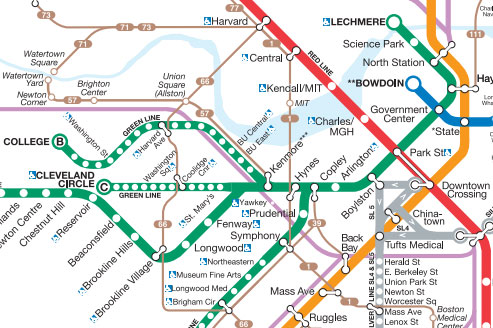Boston adds key bus routes to rail map
Like Portland and Los Angeles, and in the same vein as the “12 minute map,” Boston’s MBTA has (via produced a map that points out key bus routes in addition to the familiar rail and BRT routes.
These maps fill a useful gap between a transit agency’s full system map, which often includes bus routes that have limited hours or days of operation, and its rapid transit map, which in many cities including Boston and DC is limited to a few radial lines.
Out where those spur lines diverge, it’s often faster to take a bus between the lines rather than ride into downtown and out again. It’s more efficient for the network too, since those trips route people through the congested core unnecessarily. Boston’s highlights the major crosstown routes and routes reaching important destinations not served by the rail system.
Could Metro do something similar?
I contacted Metro about the cost of producing a map like this through their usual map contractor, CHK. I offered a guess of $50,000, which Metro spokesperson Doug Karas thought was probably too high. He emphasized that the real issue was having enough staff to maintain the map. Right now they’re trying to keep the existing system map updated as well as improving the schedules at many of Metro’s more than 10,000 bus stops.
This illustrates some of the difficulty with balancing Metro’s budget by cutting staff. I don’t know whether the map making office lost anyone during the recent budget cuts, but it’s possible that a lack of staff is holding up this or another improvement we don’t even know about.
Like any large organization, there are probably some staff cuts Metro can make without harming the system too much, but most folks who work in the Jackson Graham Building aren’t non-essential just because they don’t directly provide service by operating or maintaining transit vehicles. They plan and update schedules, manage periodic maintenance, investigate equipment failures, manage procurement contracts, collect and process revenue from fareboxes, and do other jobs that support Metro’s front line workers. If these functions are cut back, the rest of the system can suffer in ways less tangible than infrequent buses and closed Metrorail entrances.

